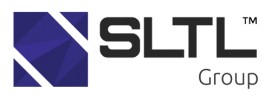QA Trainee
30+ QA Trainee Interview Questions and Answers

Asked in AVASOFT

Q. What is regression testing, smoke testing,unit testing?
Regression testing ensures changes don't break existing functionality. Smoke testing checks basic functionality. Unit testing tests individual units of code.
Regression testing: retesting of previously tested functionality to ensure changes haven't introduced new defects
Smoke testing: quick check to ensure basic functionality is working before more comprehensive testing
Unit testing: testing individual units of code to ensure they function as expected
Example: Regression testing...read more

Asked in Enzigma Software

Q. What is meant by regression testing, what is retesting, what is scrum, what is agile
Regression testing is testing the existing functionality after changes, retesting is testing the fixed defects, Scrum is an agile framework, Agile is a methodology for software development.
Regression testing ensures that changes to the software do not affect the existing functionality
Retesting is done to ensure that the defects found in the previous cycle have been fixed
Scrum is an agile framework that emphasizes teamwork, accountability, and iterative progress towards a well...read more
QA Trainee Interview Questions and Answers for Freshers

Asked in Wockhardt

Q. what is validation. what is QMS. what is SOP. what is 21 CFR and its need in documentation.
Validation is the process of evaluating a system or component during or at the end of the development process to determine if it satisfies specified requirements.
Validation is used to ensure that a system or component meets the intended purpose and functions correctly.
It involves testing and verifying that the system or component meets the defined requirements.
Validation can be performed through various methods such as functional testing, performance testing, and user accepta...read more

Asked in Kerry Ingredients

Q. What is the difference between prokaryotic and eukaryotic cells?
Prokaryotic cells lack a nucleus and membrane-bound organelles, while eukaryotic cells have a nucleus and membrane-bound organelles.
Prokaryotic cells are simpler and smaller in size compared to eukaryotic cells.
Prokaryotic cells do not have membrane-bound organelles like mitochondria or endoplasmic reticulum.
Eukaryotic cells have a true nucleus containing genetic material, while prokaryotic cells have a nucleoid region.
Examples of prokaryotic organisms include bacteria and ar...read more

Asked in 360Logica Software Testing Services

Q. What do you understand by Regression Testing?
Regression testing is the process of retesting a software application to ensure that new code changes have not adversely affected existing functionality.
Regression testing is performed after code changes to verify that the existing functionality still works correctly.
It helps in identifying any defects introduced by new code changes.
Regression testing can be automated to save time and effort.
Examples of regression testing tools include Selenium, JUnit, and TestNG.

Asked in IQVIA

Q. What are the 13 principles of GCP?
The 13 principles of Good Clinical Practice (GCP) are guidelines for conducting clinical trials ethically and ensuring the safety and well-being of participants.
Informed consent must be obtained from all participants before they can participate in a clinical trial.
The rights, safety, and well-being of trial participants are the most important considerations throughout the trial.
Clinical trials should be conducted by qualified individuals with proper training and experience.
Da...read more
QA Trainee Jobs




Asked in Prophoenix Technologies

Q. Explain about the test case and write test case on login scenario
Test case is a set of instructions to validate if a system meets its requirements. Login scenario test case checks if user can successfully login.
Test case should have a unique ID and a clear description
Test data should be prepared for valid and invalid inputs
Test steps should be written in a logical order
Expected results should be defined for each step
Test case should be reviewed and approved before execution

Asked in Unichem Laboratories

Q. What is Quality Assurance?
Quality assurance is the process of ensuring that a product or service meets the desired level of quality.
It involves creating and implementing quality standards and procedures.
It includes testing and evaluating products or services to ensure they meet the desired level of quality.
It also involves identifying and addressing any issues or defects that may arise.
Examples include software testing, product inspections, and customer feedback analysis.
Share interview questions and help millions of jobseekers 🌟


Asked in Sahajanand Laser Technology

Q. What is Good clinical practice?
Good clinical practice refers to ethical and scientific quality standards for designing, conducting, recording, and reporting clinical trials.
Adherence to ethical principles
Ensuring participant safety and well-being
Obtaining informed consent from participants
Maintaining accurate and complete documentation
Following protocol guidelines
Conducting trials with integrity and transparency

Asked in Prophoenix Technologies

Q. Explain about basics of testing and STLC, SDLC, Regression
Testing is a process of evaluating a system or its component(s) with the intent to find whether it satisfies the specified requirements or not.
Software Testing Life Cycle (STLC) is a sequence of activities performed to ensure the quality of the software product.
Software Development Life Cycle (SDLC) is a process followed by a development team within a software organization.
Regression testing is a type of software testing that ensures that previously developed and tested softw...read more

Asked in TCS

Q. What is the difference between smoke testing and sanity testing?
Smoke testing is a basic test to check if the software build is stable, while sanity testing is a narrow regression test to check specific functionalities.
Smoke testing is done to ensure the critical functionalities of the software are working fine after a build.
Sanity testing is done to verify that the specific changes made in the code are working as expected.
Smoke testing is a broader test that covers major functionalities, while sanity testing is a narrower test focusing o...read more

Asked in Sapphire Software Solutions (India)

Q. What is sdlc ? Manual testing concept
SDLC (Software Development Life Cycle) is a process for planning, creating, testing, and deploying software.
SDLC consists of several phases: Requirement Analysis, Design, Implementation, Testing, Deployment, and Maintenance.
In the Requirement Analysis phase, stakeholders define what the software should do, e.g., a hospital management system's features.
The Design phase involves creating architecture and design specifications, like UI mockups for a mobile app.
Implementation is ...read more

Asked in Crescerance

Q. What is your work experience in testing?
I have hands-on experience in software testing, focusing on manual and automated testing methodologies to ensure quality assurance.
Conducted manual testing for web applications, identifying and documenting bugs using tools like JIRA.
Developed and executed automated test scripts using Selenium to improve testing efficiency.
Participated in requirement analysis and test case design, ensuring comprehensive test coverage.
Collaborated with developers and product managers to underst...read more

Asked in Cognizant

Q. Write a program to reverse a string.
Program to reverse a string
Use a loop to iterate through the characters of the string
Append each character to the beginning of a new string
Return the reversed string

Asked in Wall Street Consulting Services

Q. What is a defect?
A defect is a flaw or imperfection in a software product that causes it to behave unexpectedly or incorrectly.
Defects can arise from coding errors, design flaws, or incorrect requirements.
Example: A login button that does not respond when clicked is a defect.
Defects can be categorized as critical, major, or minor based on their impact.
Example: A critical defect might cause a system crash, while a minor defect could be a typo in the UI.
Defects are typically documented in a def...read more
Asked in Mascot Spincontrol India

Q. Types of clinical trial phases?
Clinical trial phases include Phase 1, Phase 2, Phase 3, and Phase 4.
Phase 1: Tests safety and dosage on a small group of healthy volunteers.
Phase 2: Tests effectiveness and side effects on a larger group of patients.
Phase 3: Compares new treatment to standard treatment on a larger group of patients.
Phase 4: Monitors safety and effectiveness after the treatment is approved and on the market.

Asked in Unichem Laboratories

Q. Molecular weight of organic compounds
Molecular weight is the sum of the atomic weights of all atoms in a molecule.
Molecular weight is expressed in atomic mass units (amu).
It is important in determining the physical and chemical properties of a compound.
Organic compounds can have varying molecular weights depending on their composition.
Examples of organic compounds and their molecular weights include ethanol (46.07 amu), glucose (180.16 amu), and benzene (78.11 amu).

Asked in TCS

Q. What is stack and Queue?
Stack is a data structure that follows Last In First Out (LIFO) principle. Queue is a data structure that follows First In First Out (FIFO) principle.
Stack: LIFO principle, push and pop operations, examples - browser history, function call stack
Queue: FIFO principle, enqueue and dequeue operations, examples - printer queue, message queue

Asked in Fermenta Biotech

Q. What do you know about QA?
QA stands for Quality Assurance. It is a process of ensuring that the software or product meets the required quality standards.
QA involves testing the software or product to identify defects or bugs
It also involves ensuring that the software or product meets the functional and non-functional requirements
QA is an ongoing process that starts from the beginning of the software development life cycle and continues until the product is released
QA also involves creating test plans,...read more

Asked in Faurecia

Q. What is beta testing?
Beta testing is the final phase of testing before a software product is released to the public, where real users test the product in a real-world environment.
Beta testing helps identify bugs, usability issues, and gather feedback from real users.
Beta testers are usually external users who volunteer to test the product before its official release.
Beta testing can be open to the public or limited to a select group of testers.
Examples of beta testing include Google's beta progra...read more

Asked in Amazon

Q. What is Black Box Testing?
Black Box Testing is a software testing method where the internal structure/design of the application is not known to the tester.
Tester focuses on the functionality of the software without knowing its internal code
Tests are based on requirements and specifications
Input data is provided and output is verified without knowing how the software processes the data

Asked in Amazon

Q. What is integration testing?
Integration testing is a type of testing where individual units are combined and tested as a group to ensure they work together correctly.
Integration testing focuses on testing the interactions between different components/modules of a system.
It helps in identifying issues related to communication between different units.
Examples include testing the integration of a login module with a database or testing the integration of a payment gateway with an e-commerce website.


Q. What is the difference between an error and an exception?
Error is a syntactical mistake in code, while Exception is a runtime issue that disrupts program flow.
Error is a compile-time issue, while Exception is a runtime issue
Errors are generally caused by the programmer, while Exceptions are caused by the environment or user input
Examples of Errors include syntax errors, missing semicolons, etc.
Examples of Exceptions include NullPointerException, ArrayIndexOutOfBoundsException, etc.

Asked in Alembic Pharmaceuticals

Q. Why did you choose QA after completing your MPharm?
I chose QA in Mpharm to ensure the safety and efficacy of pharmaceutical products.
Passion for ensuring quality and safety in pharmaceutical products
Interest in conducting tests and experiments to ensure efficacy
Desire to contribute to the healthcare industry by ensuring high standards of quality
Opportunity to work in a dynamic and challenging field

Asked in Outline Systems

Q. What about stability?
Stability in QA refers to the ability of a system to remain consistent and reliable over time.
Stability testing is crucial to ensure that the software or system performs consistently under various conditions.
It involves testing for memory leaks, performance degradation, and system crashes.
Examples of stability testing include soak testing, stress testing, and reliability testing.
Stability is important for ensuring a positive user experience and preventing system failures in p...read more

Asked in Amazon

Q. What is the difference between SDLC and STLC?
SDLC is the process of developing software, while STLC is the process of testing software.
SDLC focuses on the development of software from planning to deployment.
STLC focuses on the testing activities like test planning, test design, test execution, and test closure.
SDLC includes phases like requirements gathering, design, coding, testing, and deployment.
STLC includes phases like test planning, test design, test execution, and test closure.
SDLC is more about the development t...read more

Asked in Jocata

Q. What is the STLC life cycle?
STLC (Software Testing Life Cycle) is a process used by QA teams to plan, design, execute, and report on testing activities.
STLC involves phases like requirement analysis, test planning, test design, test execution, and test closure.
Each phase has specific goals and deliverables to ensure thorough testing of the software.
For example, in the test execution phase, test cases are executed, defects are logged, and regression testing is performed.
STLC helps in ensuring the quality...read more

Asked in Unichem Laboratories

Q. Name Reaction and details
Name a reaction and provide details.
The Grignard reaction involves the addition of an organomagnesium halide to a carbonyl compound.
The Diels-Alder reaction is a cycloaddition reaction between a diene and a dienophile.
The Friedel-Crafts reaction involves the alkylation or acylation of an aromatic ring using a Lewis acid catalyst.
The Heck reaction is a palladium-catalyzed coupling reaction between an aryl or vinyl halide and an alkene.
The Sanger reaction is a method for sequen...read more

Asked in QualityKiosk Technologies

Q. Explain OOPS.
OOPS stands for Object-Oriented Programming. It is a programming paradigm based on the concept of objects.
OOPS focuses on creating objects that contain data and methods to manipulate that data.
It allows for encapsulation, inheritance, and polymorphism.
Example: Inheritance - a class 'Dog' can inherit traits from a class 'Animal'.

Asked in Laurus Labs

Q. What are blenders?
Blenders are kitchen appliances used to mix, puree, or emulsify food and other substances.
Blenders have a motorized base with a container to hold the ingredients.
They typically have sharp blades at the bottom of the container to blend the ingredients.
Blenders can be used to make smoothies, soups, sauces, and other liquid-based recipes.
Interview Questions of Similar Designations
Interview Experiences of Popular Companies








Reviews
Interviews
Salaries
Users

















